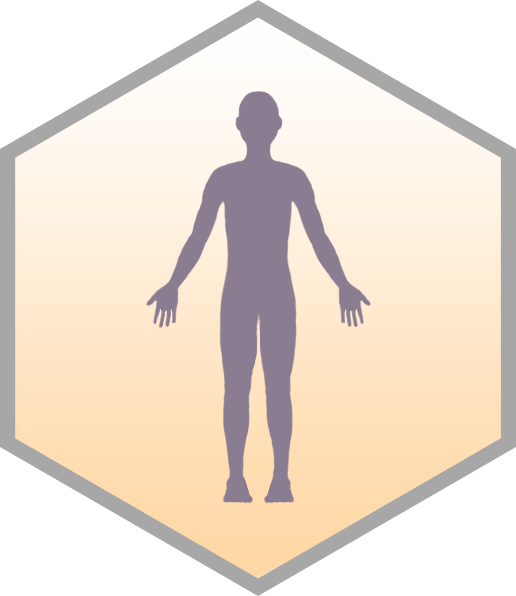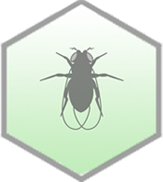GIS1 / YDR096W Overview
- Standard Name
- GIS1 1
- Systematic Name
- YDR096W
- SGD ID
- SGD:S000002503
- Feature Type
- ORF , Verified
- Description
- Histone demethylase and transcription factor; regulates genes during nutrient limitation; activity modulated by proteasome-mediated proteolysis; has JmjC and JmjN domain in N-terminus that interact, promoting stability and proper transcriptional activity; contains two transactivating domains downstream of Jmj domains and a C-terminal DNA binding domain; relocalizes to the cytosol in response to hypoxia; GIS1 has a paralog, RPH1, that arose from the whole genome duplication 1 2 3 4 5 6 7 8 9
- Name Description
- GIg1-2 Suppressor 3
- Paralog
- RPH1 8
- Comparative Info
-







Sequence
The S. cerevisiae Reference Genome sequence is derived from laboratory strain S288C. Download DNA or protein sequence, view genomic context and coordinates. Click "Sequence Details" to view all sequence information for this locus, including that for other strains.
- Summary
- GIS1/YDR096W is located on the right arm of chromosome IV between DNF2 flippase and ARS421 replication origin; coding sequence is 2685 nucleotides long with 25 SNPs, 11 of which cause amino acid polymophisms; GIS1 has a paralog, RPH1, that arose from the whole genome duplication
Analyze Sequence
S288C only
BLASTN | BLASTP | Design Primers | Restriction Fragment Map | Restriction Fragment Sizes | Six-Frame Translation
S288C vs. other species
BLASTN vs. fungi | BLASTP at NCBI | BLASTP vs. fungi
S288C vs. other strains
Protein
Basic sequence-derived (length, molecular weight, isoelectric point) and experimentally-determined (median abundance, median absolute deviation) protein information. Click "Protein Details" for further information about the protein such as half-life, abundance, domains, domains shared with other proteins, protein sequence retrieval for various strains, physico-chemical properties, protein modification sites, and external identifiers for the protein.
- Summary
- Gis1p is 894 amino acids long, shorter-lived, low in abundance; contains 2 zinc fingers; acetylated on K81, phosphorylated on 25 residues; relocalizes to the cytosol in response to hypoxia
- Length (a.a.)
- 894
- Mol. Weight (Da)
- 99482.5
- Isoelectric Point
- 7.58
- Median Abundance (molecules/cell)
- 2162 +/- 1730
- Half-life (hr)
- 8.5
Alleles
Curated mutant alleles for the specified gene, listed alphabetically. Click on the allele name to open the allele page. Click "SGD search" to view all alleles in search results.
View all GIS1 alleles in SGD search
Gene Ontology
GO Annotations consist of four mandatory components: a gene product, a term from one of the three Gene Ontology (GO) controlled vocabularies (Molecular Function, Biological Process, and Cellular Component), a reference, and an evidence code. SGD has manually curated and high-throughput GO Annotations, both derived from the literature, as well as computational, or predicted, annotations. Click "Gene Ontology Details" to view all GO information and evidence for this locus as well as biological processes it shares with other genes.
- Summary
- H3-K36 specific histone demethylase and sequence-specific DNA-binding transcription factor; involved in regulation of phospholipid biosynthesis; localizes to nucleus, relocalizes to cytosol in response to hypoxia
View computational annotations
Molecular Function
- Manually Curated
Biological Process
- Manually Curated
- involved in negative regulation of transcription by RNA polymerase II (IMP)
- involved in positive regulation of transcription by RNA polymerase II (IMP, IDA)
- involved in regulation of phospholipid biosynthetic process (IMP)
Phenotype
Phenotype annotations for a gene are curated single mutant phenotypes that require an observable (e.g., "cell shape"), a qualifier (e.g., "abnormal"), a mutant type (e.g., null), strain background, and a reference. In addition, annotations are classified as classical genetics or high-throughput (e.g., large scale survey, systematic mutation set). Whenever possible, allele information and additional details are provided. Click "Phenotype Details" to view all phenotype annotations and evidence for this locus as well as phenotypes it shares with other genes.
- Summary
- Non-essential gene; null mutant shows growth defect on non-fermentable carbon sources, small defect in vacuolar fragmentation, abnormal spore wall formation, decreased growth rate of newly germinated spores, increased competitive fitness except on minimal medium, decreased sensitivity to heat and to oxidative stress; overexpression slows growth, exacerbates toxicity of hydroxyurea and of fluconazole
Classical Genetics
- null
- competitive fitness: decreased
- competitive fitness: increased
- desiccation resistance: decreased
- heat sensitivity: decreased
- oxidative stress resistance: increased
- resistance to chemicals: decreased
- resistance to chemicals: increased
- sporulation: normal
- vacuolar morphology: abnormal
- vegetative growth: abnormal
- viable
- overexpression
Large-scale Survey
Interaction
Interaction annotations are curated by BioGRID and include physical or genetic interactions observed between at least two genes. An interaction annotation is composed of the interaction type, name of the interactor, assay type (e.g., Two-Hybrid), annotation type (e.g., manual or high-throughput), and a reference, as well as other experimental details. Click "Interaction Details" to view all interaction annotations and evidence for this locus, including an interaction visualization.
- Summary
- Gis1p interacts physically with proteins involved in transcription; GIS1 interacts genetically with genes involved in trancription; the gis1 null mutant is viable; the null mutant of paralog rph1 is viable; the gis1 rph1 double mutant displays a synthetic growth defect.
355 total interactions for 297 unique genes
Physical Interactions
- Affinity Capture-MS: 155
- Affinity Capture-RNA: 5
- Affinity Capture-Western: 8
- Biochemical Activity: 1
- Proximity Label-MS: 1
- Two-hybrid: 20
Genetic Interactions
- Dosage Lethality: 3
- Dosage Rescue: 8
- Negative Genetic: 110
- Phenotypic Enhancement: 14
- Phenotypic Suppression: 11
- Positive Genetic: 6
- Synthetic Growth Defect: 10
- Synthetic Lethality: 1
- Synthetic Rescue: 2
Regulation
The number of putative Regulators (genes that regulate it) and Targets (genes it regulates) for the given locus, based on experimental evidence. This evidence includes data generated through high-throughput techniques. Click "Regulation Details" to view all regulation annotations, shared GO enrichment among regulation Targets, and a regulator/target diagram for the locus.
- Summary
- GIS1 encodes a transcription factor that is a member of the C2H2 zinc finger class. Gis1p and its paralog Rph1p act as both transcriptional activators and repressors for overlapping sets of target genes. They act predominantly as repressors during exponential growth. Gis1p and Rph1p repress transcription of PHR1, and this repression is inhibited in response to DNA damage. After the diauxic shift, Gis1p and Rph1p function predominantly as transcriptional activators of genes involved in glycerol and acetate metabolism and in survival during stationary phase. Because of its roles in these processes, Gis1p is required for extension of chronological lifespan by nutrient limitation. Gis1p additionally activates transcription of some sporulation-specific genes, such as DIT1 and SPS100. Gis1p binds to postdiauxic shift (PDS) elements in the promoters of its target genes. GIS1 is a regulatory target of the Protein Kinase A (PKA), Sch9, and TORC1 pathways that sense nutrient availability. Gis1p is activated via phosphorylation by the Rim15p kinase, and is downregulated via dephosphorylation by protein phosphatase 2A in complex with its regulatory subunit Cdc55p. Additionally, Gis1p is subject to proteasome-mediated degradation upon resumption of growth after stationary phase. In addition to its role as a transcription factor, Gis1p may function as a histone demethylase: it has JmjN and JmjC domains, which are suggestive of histone demethylase activity. However, it carries a mutation in a conserved residue of the JmjC domain and there is controversy over whether it is functional as a histone demethylase. RPH1, the paralog of GIS1, encodes a transcription factor with confirmed histone demethylase activity.
Expression
Expression data are derived from records contained in the Gene Expression Omnibus (GEO), and are first log2 transformed and normalized. Referenced datasets may contain one or more condition(s), and as a result there may be a greater number of conditions than datasets represented in a single clickable histogram bar. The histogram division at 0.0 separates the down-regulated (green) conditions and datasets from those that are up-regulated (red). Click "Expression Details" to view all expression annotations and details for this locus, including a visualization of genes that share a similar expression pattern.
Summary Paragraph
A summary of the locus, written by SGD Biocurators following a thorough review of the literature. Links to gene names and curated GO terms are included within the Summary Paragraphs.
Last Updated: 2024-07-01
Literature
All manually curated literature for the specified gene, organized into topics according to their relevance to the gene (Primary Literature, Additional Literature, or Review). Click "Literature Details" to view all literature information for this locus, including shared literature between genes.